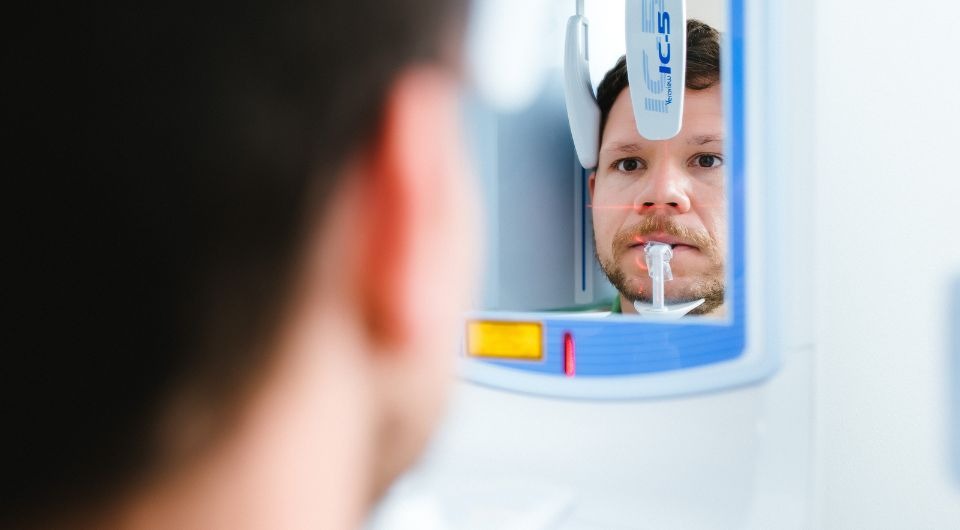
Posted on: 19 March, 2024
Dental x-rays play important roles in diagnosis and treatment planning
3 minute read
Whether you're visiting the dentist for your regular check-up, a treatment, or due to symptoms that could indicate a problem, x-rays can be a vital tool for revealing more to your dentist than is possible with the naked eye.
Dentists may take an x-ray of your mouth as part of routine oral health assessment to check the condition of your teeth and jaw bone and to look for any signs of possible problems at an early stage, when they are usually easier to treat. Dentists also use x-rays to help them plan intricate procedures, such as root canal therapy or placing dental implants, and to determine a patient’s eligibility for treatments.
At Mount Lawley Dental, we use a range of modern digital x-ray techniques to give our dentists a comprehensive view of your mouth and your oral health with minimal exposure. For more information or to schedule an appointment, call us now on (08) 9227 8777 or book online.
Like other types of x-rays, dental x-rays are radiographs, meaning they use electromagnetic radiation to take images inside your body. Hard tissues like teeth and bone absorb x-rays and appear in high contrast in the resulting images, while they pass through soft tissues like the skin and gums. This allows your dentist to see internal structures such as tooth roots, the jaw bone and the sinus cavity that are normally hidden from view.
Dental x-rays focus on the mouth or surrounding areas, and your dentist will ensure that other parts of your body are protected from unnecessary exposure. It's important to sit as still as possible while an x-ray is being taken to produce a clear image.
Dental x-rays are often the only means to accurately identify an oral health problem and develop an effective treatment plan. As a preventive tool during oral health assessments, they can also help dentists to catch some problems early, which could avoid unnecessary discomfort and more intensive treatment later.
It’s recommended that most people have a dental x-ray at least once a year, but your dentist may recommend a different frequency between 6 and 18 months depending on your individual needs. X-rays may be needed more frequently if you have an existing oral health condition or are undergoing a treatment.
Some of the problems that can be identified with x-rays include:
X-rays can also show dentists whether or not you’re a candidate for treatments such as dental implants by assessing the condition of your jaw bone. X-rays and other diagnostic images are also used in treatment planning for a range of procedures, including implants, teeth straightening and root canal therapy, to improve the accuracy and success of treatments.
Dentists may use a range of x-rays, depending on what type of information they need to find out. The two main categories of x-rays are intraoral (taken inside the mouth) and extraoral (taken outside the mouth). Here are some of these systems and their uses.



Our dentists at Mount Lawley Dental may recommend a bitewing x-ray or panoramic x-ray, depending on the situation. We also use 3D CBCT scans during planning for dental implants. Contact our team if you want to know more.

.jpg)
The most common question that patients have about dental x-rays is whether they’re safe, and in most cases the answer is yes. This is because the radiation dose of a modern digital x-ray is very low – only 10%–20% that of traditional x-ray systems – and negligible when x-rays are spaced 6 months apart or longer.
X-rays only become a potential risk when exposure is frequent, which may increase a person’s cancer risk. This is why dentists and technicians leave the room before taking patient x-rays, to avoid unnecessary exposure on a regular basis.
X-rays are also considered safe for children and pregnant women, though dentists may still recommend avoiding x-rays during pregnancy unless they are strictly needed, while taking appropriate precautions to avoid exposing a developing foetus to radiation.
If you’re concerned about an oral health problem or just due for a check-up, our new patient offer at Mount Lawley Dental includes full-mouth OPG and bitewing x-rays, with no gap fee if you’re covered by a health fund (to the value of $350) or $350 without insurance (valued at $516).
This offer also includes a comprehensive examination with our experienced Mount Lawley dentists, a professional scale, clean and fluoride treatment, and other photos and digital imaging as needed for treatment planning.
If you haven’t had dental x-rays taken for a long time and you’re new to Mount Lawley Dental, our new patient offer provides great value. A panoramic (OPG) x-ray shows the teeth, jaws and sinuses for identifying a wide range of oral health conditions, many of which are not detectable with bitewing x-rays alone. This means the new patient offer provides better value than most clinics, providing a more comprehensive view of your oral health.
To find out more or schedule a check-up, call our friendly team today on (08) 9227 8777 or make an online booking. We also welcome patients from Highgate, Inglewood, North Perth and other nearby areas.